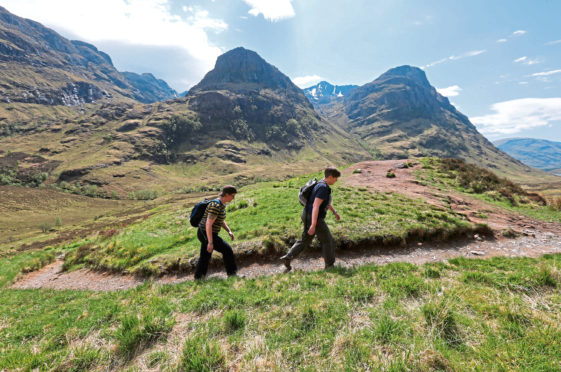Tourism, in the wider sense encompassing hospitality and events, is like an old lager advertisement: it refreshes parts of the economy other industries cannot reach.
Except just now it isn’t. And that’s a problem for all peripheral regions of the world that rely on tourism for their economic, social, cultural and environmental wellbeing.
Tourism businesses are very much part of our regional or wider community; providing jobs and allowing us, the hosts, to serve and have conversations with visitors from both overseas and over the hill.
This industry allows many of us to live in our communities and keep our families in the area.
The benefits grow beyond the tourist spend. With the economic multiplier model there is a demonstrable ripple effect, sustaining others in the host community.
Without the tourism businesses in your area, the butcher, local craft shop, petrol pumps or artisan coffee shop would not thrive.
Jump-starting tourism is going to be a huge challenge. Drawing on current VisitBritain UK research figures gives an insight into just how huge.
The research found that enhanced cleanliness and social distancing measures are the key conditions for accommodation providers to have in place for the majority of UK adults planning on taking a summer holiday this year.
The top five reasons for not being confident about travelling from September onwards are:
- Concerns about catching Covid-19 (55%)
- Fear restrictions on travel from government (national or devolved) (44%)
- Anticipate fewer opportunities to eat/drink out (39%)
- Anticipate fewer things to do/places to visit (35%)
- Believe it is not responsible to travel in this period (35%)
Compared to normal (remember that?), the public anticipate taking fewer short breaks and holidays of four-plus nights in the UK between now and the year end, and report anticipating taking significantly fewer overseas short breaks and holidays by the end of the year.
With a glass half full this does present an opportunity for Scotland.
I’m not a scientist, so this is my personal view. There are anomalies and contradictions in all government approaches to getting to the new normal.
All politicians are working hard to make the best decisions they can, so no criticism, please.
But in my view we need tourism and hospitality up and running now. I for one need to be back in my local, reaffirming my sense of place in the community, and so do you. Our communities need to come back to life.
I’d allow outdoor socially distant hospitality to return immediately. That would include: pubs, cafes, camp sites, all outdoor dining, caravan parks, lodges and holiday rentals, outdoor adventure and activity provision, and being optimistic, ice-cream parlours, too.
Air bridges also need to be open now for routes between Scotland and countries that are Covid- free.
This should be followed by a high-speed timetable, not traffic lights, to opening food, beverage and accommodation offerings inside, too.
Museums and galleries pose less danger than supermarkets, so let’s get these open and support them, please.
Hotels, for me, have always been special places of relaxation and sanctuary. Hoteliers can make accommodation safe.
Yes, it’s PPE, cashless payment, a fabulous room service offering, disposable key cards for bedroom entry, rooms that are visually sealed after deep clean to assure the next visitor that all is well.
Earlier this year before lockdown, I laughed at the idea of a hologram or robot checking in guests.
To me that was not hospitality. Maybe in the latter half of 2020 it is.
It’ll be different, sure, and the public and rule makers have to trust the industry to do their best to keep their invaluable locals and visitors safe.
There is a will, and ability, on the part of the industry to work hard to get the welcome right, but moving to our new normal is going to cost.
Government and their agencies will be required to fund targeted support, accept less back in the short term from non-domestic rates, forget any notion of a tourist tax, and bring in a reduction in VAT for the industry. But, get the economy moving and tax receipts will follow.
Are you all willing to play your part? I only ask because it will need to cost more. All businesses will need to cut capacity.
Fewer people will inhabit our hospitable spaces and eateries. A lower volume of sales and a higher cost of sales is unpalatable, if you pardon the pun.
There are also the higher operating costs I’ve outlined above, and the need to invest in new technology. We, as customers, have to accept we will need to pay more for a valued service.
The biggest cost, of course, will be borne by operators. If, as an industry, we are going to be more expensive, and there is a financial imperative for this to be so, then we have to be good.
No, not just good, outstanding. Yes, a cost for all stakeholders, but an investment in our grandchildren’s communities too.
Dr Andrew Martin is a senior lecturer and director of the Scottish Centre of Tourism at Robert Gordon University
